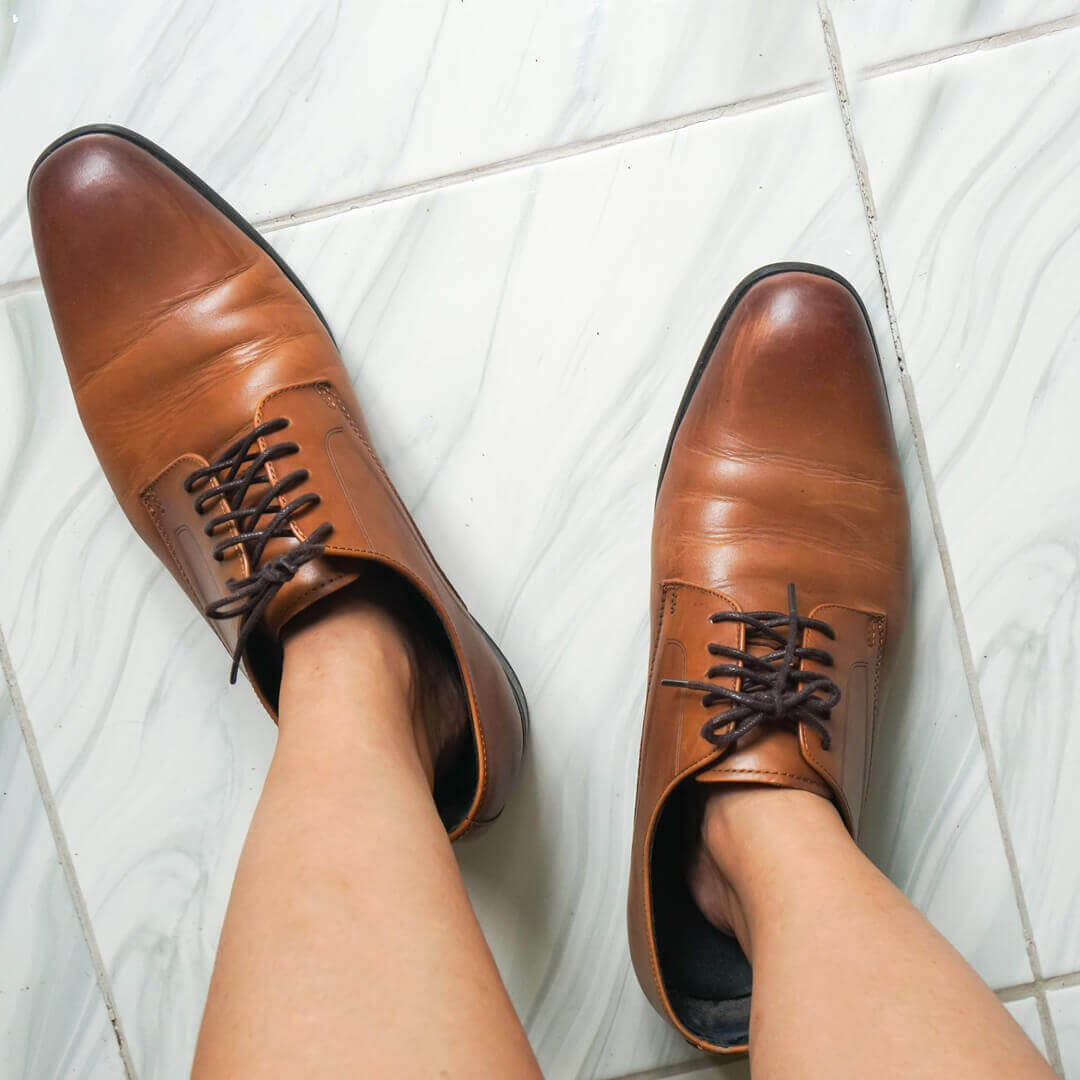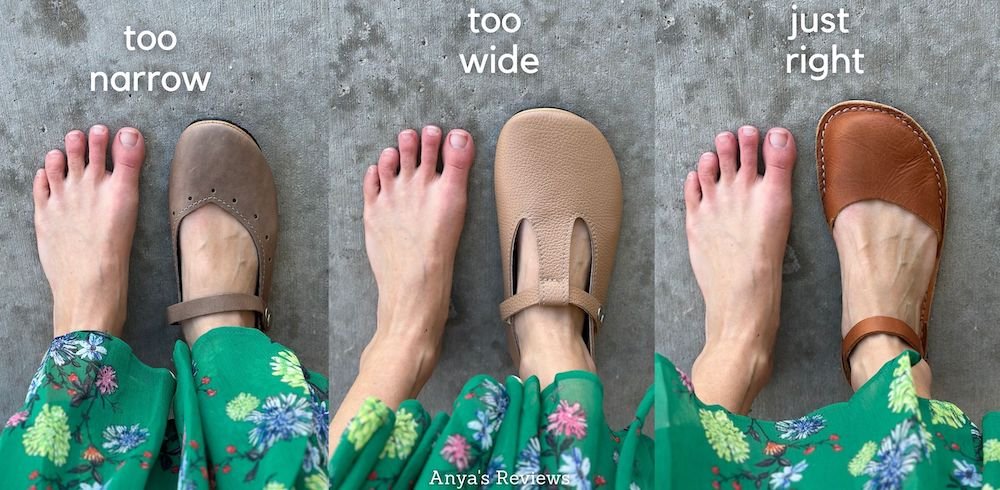The perfect pair of shoes can elevate your style, improve your comfort, and provide the necessary support for your daily activities. However, wearing shoes that are too big can lead to various issues that affect your overall experience. In this guide, we’ll cover how to tell if your shoes are too big and what it means for your feet, health, and style.
Why Proper Fit Matters
Wearing the right size shoes is essential for numerous reasons. Not only does it impact your comfort, but it can also affect your foot health. According to the American Podiatric Medical Association (APMA), improperly fitting shoes can lead to foot pain, blisters, and other conditions such as plantar fasciitis or bunions. This is why understanding how to recognize the signs of oversized shoes is crucial for both casual wearers and shoe enthusiasts alike.
The Dangers of Oversized Shoes
When shoes are too big, it can cause your foot to slide around inside the shoe. This movement leads to friction, which can cause blisters. Additionally, it can impact your balance and stability, making you more susceptible to falls. A study by the National Center for Biotechnology Information highlights how proper shoe fit is necessary for supporting joint alignment and reducing the risk of injuries during physical activities.

Recognizing the Signs Your Shoes Are Too Big
Now that we understand why proper shoe fitting is crucial, let’s explore how to tell if your shoes are too big. Here are eight signs to look for:

1. Heel Slippage
One of the most common indicators that your shoes are too big is heel slippage. When walking, if your heel lifts out of the shoe or slides around, it’s a clear sign that the shoe may be too big. This slippage can lead to difficulties in walking and even cause injuries over time.

Real-World Experience: Sarah’s Struggle with Slippage
Take Sarah, for example. She purchased a pair of trendy ankle boots that she fell in love with at first sight. However, after a few days of wear, she noticed her heels slipping out, making it challenging to walk confidently. After consulting a shoe professional, she discovered that the size she chose was too large for her foot width, leading to this problematic slippage.
2. Excessive Space in the Toe Box

Another sign of oversized shoes is excessive space in the toe box. When standing, your toes should lightly touch the front of the shoe without being cramped. If you can move your toes freely without any contact with the shoe’s front, it’s time to reevaluate the size.
Comparison Table: Proper vs. Improper Fit
| Feature | Proper Fit | Improper Fit |
|---|---|---|
| Toe Contact | Light touch | No contact |
| Heel Movement | Minimal movement | Excessive slippage |
| Side Fit | Secure fit | Pinching or loose |

3. Inability to Walk Comfortably
If you find yourself adjusting your walk or experiencing discomfort while wearing your shoes, they may be too big. You should walk without any effort or discomfort. If you feel like you’re clopping around or need to grip with your toes to keep the shoes on, it’s a sign that you need a different size.

Case Study: Mike’s Marathon Preparation
Mike prepared for his first marathon and bought a pair of running shoes that felt great in the store. However, during his training, he frequently tripped over his own feet. After consulting with a running specialist, he realized he had chosen shoes that were a half size too big, contributing to his discomfort and instability during his runs.
4. Blisters and Calluses

Blisters and calluses can develop from excessive movement within a shoe. If you notice these painful nuisances on your feet, it could be because your shoes are too large, causing friction as your foot slides inside them.
5. Arch Pain

Wearing shoes that do not adequately support your arches can lead to pain and discomfort. If you’re experiencing arch pain frequently, it’s worth checking the fit of your shoes. A good fit will provide the right support, ensuring that your arches are neither overextended nor unsupported.
6. Visible Space at the Back of the Shoe
When looking at your shoes from the back, there shouldn’t be a significant gap between your heel and the shoe’s heel counter. If you notice a substantial gap, it indicates that the shoes might be too big, leading to improper heel support.
7. Shoes Feel Too Heavy
If your shoes feel heavier than they should, it may be because they are too big, and your feet are doing extra work to keep them on. When shoes are properly sized, they should feel lightweight and comfortable.
8. Lack of Arch Support
Proper arch support is critical for comfort and foot health. If your foot feels flat or unsupported in a shoe, it may be an indication that the fit isn’t right. Shoes that allow your foot to sink too low can lead to fatigue and pain.
Tips for Finding the Right Shoe Size
Now that you’ve identified the signs of too big shoes, how can you find the right size? Here are some tips to help you choose the perfect footwear:
1. Measure Your Feet Regularly
Feet can change over time due to various factors such as age, weight fluctuations, or pregnancy. Make it a habit to measure your feet every year. Use a Brannock device or visit a professional fitting store to get accurate measurements.
2. Try Shoes On at the End of the Day
Your feet swell throughout the day, so it’s best to try shoes on in the evening or after a workout when your feet are at their largest. This will help you find a size that accommodates any swelling.
3. Consider the Type of Socks
The socks you wear can significantly affect shoe fit. If you frequently wear thicker socks, make sure to account for this when fitting your shoes. Always test shoes with the same type of socks you plan to wear regularly.
4. Walk Around Before Buying
Never purchase shoes without giving them a proper trial. Walk around the store for at least 10-15 minutes to gauge comfort, heel slippage, toe space, and overall fit.
5. Don’t Rely on Size Alone
Sizes can vary between brands and even styles. Always prioritize the fit over the number on the label. If you find a shoe you love but it feels off, don’t be afraid to try different sizes or widths.
Product Highlights: Recommended Shoe Brands for Perfect Fit
Here are some footwear brands known for their attention to fit and comfort:
1. Brooks
Known for their excellent running shoes, Brooks provides a range of sizes and widths, catering to runners of all kinds.
2. New Balance
New Balance is famous for its extensive size range, including wider fit options, making it easier for individuals to find their perfect match.
3. Clarks
For everyday wear, Clarks shoes are designed with comfort and support in mind, offering various sizes and widths.
Pros and Cons of Wearing Shoes That Are Too Big
Pros
- Ample Toe Space
- Padded Comfort
- Easy to Slide On and Off
Cons
- Risk of Injuries
- Increased Fatigue
- Style Compromise
FAQs: Common Questions About Shoe Sizing
1. How do I measure my feet at home?
You can measure your feet at home by standing on a piece of paper, tracing the outline of your foot, and measuring the length from the heel to the longest toe.
2. What if one foot is larger than the other?
It’s common for one foot to be slightly larger. Choose shoes based on the larger foot and consider insoles or thicker socks for the smaller foot.
3. Should I buy shoes based on my usual size?
Not always. Different brands and even different styles can fit differently. Always try on shoes, regardless of your usual size.
4. What about brand size variations?
Sizes can vary by brand and style. Always check the brand’s sizing chart for the most accurate fit.
5. How tight should my shoes be?
Your shoes should feel snug but not constricting. You should have enough space to wiggle your toes comfortably.
6. Can shoes stretch over time?
Yes, some materials stretch, especially leather. However, this shouldn’t be your main consideration when purchasing shoes; proper fit is vital.
7. What are the best shoes for wide feet?
Brands like New Balance and ASICS offer excellent options for wide feet. Always look for shoes labeled with “wide” or “extra wide.”
8. Can I return shoes if they don’t fit properly?
Most retailers have return policies that allow you to return shoes that don’t fit. Always check the return policy before purchasing.
9. Are online shoe fittings accurate?
Online shoe fittings can help, but they are not foolproof. Always read reviews and if possible, try on shoes in-store before buying online.
Conclusion: Finding Your Perfect Fit
Understanding how to recognize when your footwear is too big is vital for your comfort and foot health. By keeping an eye on the signs we outlined and taking proactive steps to find the right fit, you can ensure that your footwear not only looks great but feels great too!
Remember, a good pair of shoes can make all the difference in how you feel and perform daily. With this guide, you’ll be well on your way to mastering the art of shoe fitting!
For further reading about proper shoe sizing and foot health, check out the following resources: APMA Foot Health and NCBI Guidelines on Shoe Fit.